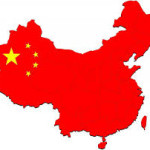Created by: HOSEOKNAM
Number of Blossarys: 42
В първото десетилетие на маоизма унищожени предосвобожденския частна земеделска икономика, чрез поземлената реформа през 1952 г. Мао последва с колективизацията на земеделските земи и системата на ...
The dual-track economic system is the most characteristic element of the pattern of China's economic reform implemented by Deng XIaoping. His outward-looking policy had opened the economy to the ...
One of the challenges that faced the Chinese leadership after Mao's death in 1978 was who would be the next chairman leading China. It was Deng Xiaoping who made great efforts to advance China in the ...
The first decade of Maoism destroyed the pre-Liberation private farm economy, through Land Reform in 1952. Mao followed up with the collectivization of farm land and the commune system. ...
During the early and mid-1960s after the Cultural Revolution, Mao and a group of radical intellectuals gradually developed a new paradigm of socialist development, radical Maoism. Institutions and ...
In the mid-1950s, Mao stated should concentrate on agriculture and light industry, which were more appropriate for an underdeveloped county like China. In terms of political and economic ...
Mao is recognized as the charismatic supreme leader who attained power at the Seventh Congress of the CCP in 1945. He was the great Father of the Revolution who conducted largely practical in the ...


 English (EN)
English (EN)




